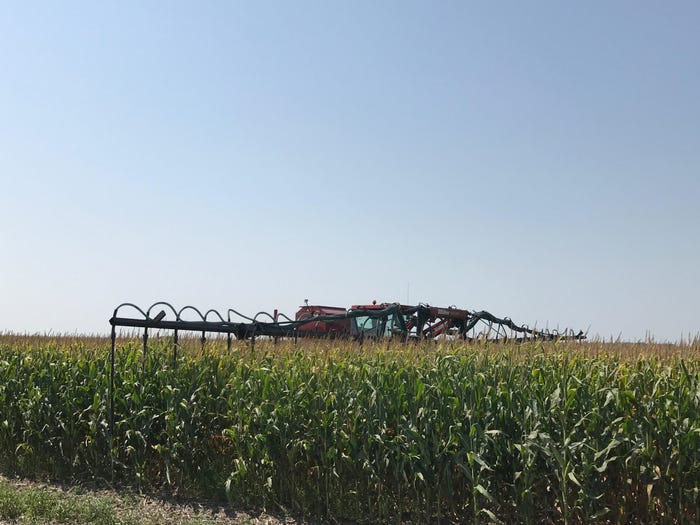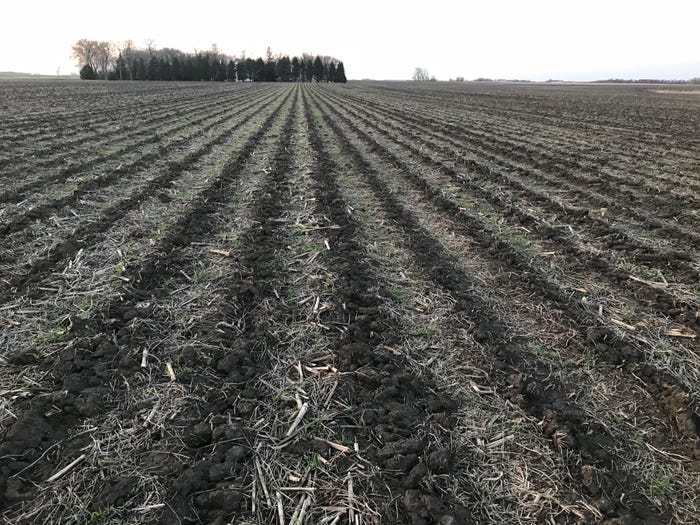August 20, 2018

---------
Think Different
Cover crop success is not limited to geographies, certain soils or other defined limitations. They will work if you want to work at it and are willing to change.
Making cover crops work requires gathering information, finding mentors to advise you and learning as you go.
Cover cropping has its own unique challenges. Mistakes can be made, just as they can with herbicides or other inputs. Even apparent failures can provide benefits.
Stay flexible and adjust to the situation, as what works one year may not work the next as weather patterns and other variables come into play.
Cover crops are not the be all/end all or the magic bullet, but rather they are one more tool in the agronomic toolbox with benefits that may be easy to see, but hard to assign a dollar value.
---------
Cover crops have become the agronomic practice of the day, getting tremendous attention in the farm press and being credited with everything from ending erosion to controlling weeds and reducing nutrient needs. At the same time, cover crop practitioners and the practice are at times derided and discredited by critics who proclaim that "Cover crops don't work north of (pick your geographic point)," or "They don't work here," or worse.
"If you want cover crops to work, they will work for you," says Myron Sylling, a southeastern Minnesota corn and soybean producer who farms with his brother Mikal near the Iowa border. "But, you can't just try something. If you do, it probably won't work."
He notes that negative stories often include glaring examples of doing things the wrong way, such as planting the wrong species after harvest.
"We don't want anyone to make that kind of mistake," he says. "It's why we share the mistakes we've made and the problems we've encountered. Cover crops will work if you are willing to adapt."
Adapt to succeed
Sylling has done his share of adapting. In fall of 2012, no-till seeding to control erosion in a limited area was an eye-opening success. However, an aerial application of cereal rye and winter wheat on 100 acres with rye alone on 200 acres the following dry fall was a complete failure.
After investing in a Great Plains no-till drill, they put in another 300 acres in fall of 2014, expanded to 500 acres fall of 2015 and then to 1,200 in the fall of 2016. Even a 50-acre experiment with hairy vetch, cereal rye and rapeseed turned out well, almost too well. A late spring in 2017 with rains every few days delayed planting soybeans, and the rye kept growing.
"We planted into five-foot rye, and with the regular rains, the height kept the wind and sun from drying the ground," recalls Sylling.

Fall of 2017 was a challenge with only 600 acres planted and poor growth due to lack of heat units. Sylling tried mid-March frost seeding of rye on 200 acres and oats with rape on 100 acres. He reported as good or better growth than with the fall-seeded rye, but many fields were left bare.
"If you drive by our place this year, you'll see some erosion, but mostly the heavy rains washed residue off the fields where there was minimal growth at the time," says Sylling. "Look across the fence, and it is dirt that washed, not just residue."
1% OM increase
Sylling also reports more weed pressure compared to years where he was able to establish cover crops on more acres. "I'm disappointed with the covers this year, but it won't stop us," he says. "Our corn yields have been skyrocketing the last few years, the dirt stays in place and our organic matter has increased by 1% after only three years of well-established cover crops. Using the Haney test, my soil health scores doubled in long-term no-till within six weeks of planting a cover crop."

Holding soil in place on rolling fields is why Myron Sylling and his brother Mikal, first turned to no-till. Adding cover crops to the mix such as this fall drilled cereal rye enhanced soil protection, has improved soil health and increased organic matter by a full point in just three years.
If Sylling is confirmed and enthusiastic, Jordan Klassen is confirmed, but still questioning. With his wife Kelsey, parents Orvil and Karen, brother Andy and wife Ally, he farms near Mountain Lake in southwest Minnesota. They have added cover crops to their corn, soybean, alfalfa and beef operation. However, the Klassens have gone beyond simply planting cover crops to modifying a Miller high clearance sprayer with a Valmar seeder for their fields, as well as custom work. The rig allows them to do late-season interseeding in August and early September with a variety of seed mixes and rates, as well as interseeding as early as V4 for one client and V5/V6 for their own acres and others.
Reduced erosion and runoff, increased water infiltration/retention and increased soil microbes have convinced him that cover crops have a value. However, after four years of cover crops, he still has questions.
Wants more measurable results
"Am I raising more or better corn than my neighbors?" asks Klassen. "I don't know. As far as weed suppression, I am still spraying. As for soil health, how do I measure it? We still don't have the science behind it to put a dollar figure on it."
Klassen cites planting corn into a good stand of rye this spring. "Can I use the rye for a nitrogen credit?" he asks. "I know I tied some up, but when will it release and how much will be released?"
Klassen admits he gets tired of all the cheerleading on cover crops. He doesn't like the idea that throwing out some cover crops will cure everything for him.
"I can make cover crops work, but I can't put a dollar value on them," he says. "Making the investment without knowing is hard. I have more questions than answers as we try to learn the 'whys' of what we are doing."



Soil literally packed with earth worms tells Tom Cotter his combination of no-till, strip till, cover crops and cattle are doing good things for his fields.
Cover crops interseeded in 2017 came on fast this past spring in this series of images from May 4, May 10 and at planting May 18.
While Klassen remains frustrated at the lack of available answers, he doesn't plan to back off from using cover crops. "I know they aren't all rainbows and unicorns and an end all to everything, but I think they deserve more playing with. I am curious as to what we are going to learn."
Experience intensifies cover crop value
Austin, Minn., farmer Tom Cotter is confirmed and confident that cover crops are providing significant benefits to his fields. What started as an experiment with his father Michael on canning crop fields 20 years ago evolved into a full-farm practice for the past eight years. Over the past five or six years, the practice has shifted from one or two species post-harvest to cocktail mixes of up to 17 species on canning crop acres and multiple specie mixes interseeded early season in corn and soybeans. Cereal rye remains an option immediately following harvest. As cover crop use intensified, Cotter converted to no-till soybeans and strip-till corn.
It all started with rapeseed drilled on 20 acres of a 70-acre field in late July. "The rape grew all summer and fall and the next spring we tilled it under and planted corn," he recalls. "When we combined that fall we tried to figure out what was different on the one strip. It was clean and healthy and yielded better. A few weeks later, we remembered the rape."
Cotter admits to making mistakes for the first 12 years, noting that everyone does, but he never had an apparent cover crop failure until this year. "It was a terrible fall and spring with a pretty harsh winter," says Cotter. "The cover crops planted post-harvest weren't heavy enough to hold back the weeds on most of those fields. We had to use a pre-emerge on soybeans, which we normally don't."
While the covers failed for weed control, they were still a plus for soil health. "We had worms galore when we no-tilled in corn," he says. "I counted six worms per foot just in the marker trench, and we never dug to check seed without finding worms."

Help with profits
Cotter sees soil health as shelter for his crops in a storm. While he takes the long view that covers and soil health can help save the environment, he also sees a direct impact on farmers facing $3 per bushel corn and huge input costs.
"You don't need more machinery and chemicals when you are doing less tillage and covers," says Cotter.
What you do need with cover crops, he suggests, is to find a mentor or support group. When he and his dad started 20 years ago, they didn't know anyone else using covers. "Now I work with groups in both counties we farm in and exchange information with others," he says.
He also recommends being flexible. Farming with cover crops and no-till is not for people who like ruts. "I watch a neighbor do the same great conventional job on his fields year after year," says Cotter. "I'm always tweaking and changing. I know that when I plant cover crops, I am preparing my seedbed for the coming year."
About the Author(s)
You May Also Like




